

The Chemistry of Dienes and Polyenes. Volume 1
Edited by Zvi Rappoport
Copyright ∂ 1997 John Wiley & Sons, Ltd.
ISBN: 0-471-96512-X
CHAPTER 12
The effect of pressure on reactions of dienes and polyenes
¨
FRANK-GERRIT KLARNER and MATTHIAS K. DIEDRICH
Institut fur¨ Organische Chemie, Universitat¨ Gesamthochschule Essen, D-45117 Essen, Germany
Fax: +49(0)201-183 3082; e-mail: Klaerner@oc1.orgchem.uni-essen.de
I. INTRODUCTION . . . . . . . . . . . . . . . . . . . . . . . . . . . . . . . . . . . . . |
547 |
|
II. VOLUME OF ACTIVATION AND REACTION . . . . . . . . . . . . . . . . . |
548 |
|
III. CYCLOADDITIONS . . . . . . . . . . . . . . . . . . . . . . . . . . . . . . . . . . . |
552 |
|
A. Intermolecular Diels Alder Reactions . . . . . . . . . . . . . . . . . . . . . . |
552 |
|
1. |
Mechanistic aspects . . . . . . . . . . . . . . . . . . . . . . . . . . . . . . . . |
552 |
2. |
Synthetic application . . . . . . . . . . . . . . . . . . . . . . . . . . . . . . . |
563 |
B. [2 C 2] Cycloadditions of Cumulated Dienes . . . . . . . . . . . . . . . . . |
591 |
|
C. Higher Cycloadditions Involving Trienes and Tetraenes . . . . . . . . . . |
596 |
|
IV. PERICYCLIC REARRANGEMENTS . . . . . . . . . . . . . . . . . . . . . . . . |
596 |
|
A. Sigmatropic [3.3] Shifts: Cope and Claisen Rearrangements . . . . . . . |
596 |
|
B. Potential Sigmatropic [1.n] shifts (Hydrogen, Carbon, Silicon) . . . . . |
597 |
|
C. Electrocyclic Rearrangements . . . . . . . . . . . . . . . . . . . . . . . . . . . |
597 |
|
D. Intramolecular Diels Alder Reactions . . . . . . . . . . . . . . . . . . . . . . |
603 |
|
E. The Relationship between Activation or Reaction Volume |
|
|
and Ring Size . . . . . . . . . . . . . . . . . . . . . . . . . . . . . . . . . . . . . . |
603 |
|
V. MISCELLANEOUS REACTIONS OF DIENES AND POLYENES . . . . |
609 |
|
VI. CONCLUDING REMARKS . . . . . . . . . . . . . . . . . . . . . . . . . . . . . . |
610 |
|
VII. ACKNOWLEDGEMENTS . . . . . . . . . . . . . . . . . . . . . . . . . . . . . . . |
611 |
|
VIII. REFERENCES . . . . . . . . . . . . . . . . . . . . . . . . . . . . . . . . . . . . . . . |
611 |
|
I. INTRODUCTION
Pressure in the range of 1 20 kbar (units of pressure: 1 kbar D 100 MPa D 0.1 GPa D 1013.25 atm) has a strong effect on rate and position of equilibrium of many chemical reactions. Processes accompanied by a decrease of volume are accelerated by pressure and the equilibria are shifted toward the side of products while those accompanied by an increase of volume are retarded and the equilibria are shifted toward the side of
547

548 Frank-Gerrit Klarner¨ and Matthias K. Diedrich
reactants. Therefore, the application of high pressure seems to be particularly useful in controlling the course of competitive and consecutive reactions and can lead to an improvement of chemo-, regioand stereochemistry. In this chapter our major interest is focused on the effect of pressure on pericyclic reactions of dienes and polyenes in compressed liquid state or in compressed solution, including cycloadditions such as the most important Diels Alder [4 C 2] cycloadditions of conjugated dienes, [2 C 2] cycloadditions of cumulated dienes, or higher cycloadditions involving trienes and tetraenes, as well as sigmatropic and electrocyclic rearrangements.
Processes with gaseous reactants are excluded here. Due to the large compressibility of gases an increase of pressure (up to 1 kbar) leads essentially only to an increase of gas concentration, and hence to an acceleration of bimolecular processes in which gases are involved as reactants. The effect of pressure on a chemical reaction in compressed solution is largely determined by the volume of reaction ( V) and the volume of activation ( VD6 ). It is not the purpose of this chapter to provide a complete survey of reactions of dienes and polyenes which have been investigated at elevated pressures. There are many excellent monographs (e.g. References 1 4) and reviews (e.g. References 5 16) on this topic which cover the literature up to early 1990. After a short introduction into the basic concepts necessary to understand pressure effects on chemical processes in compressed solutions, our major objective is to review the literature of the past ten years.
II. VOLUME OF ACTIVATION AND REACTION
Static high pressure in the range of 1 20 kbar, frequently used for the investigation of organic reactions in compressed fluids or solids, can be generated with relatively simple devices1,3. A list of some suppliers delivering commercially available high-pressure equipment is cited17. Pressure influences the physical properties of matter such as boiling and melting point, density, viscosity, solubility, dielectric constant and conductivity. Before carrying out high-pressure experiments it is important to have some knowledge of these effects. The melting points of most liquids used as common solvents are raised by pressure (ca 15 20 °C per 1 kbar). Therefore it is necessary for a high-pressure experiment which is planned to be performed in solution, that a solvent is used which does not solidify under the chosen conditions. The solubility of gases in liquids is increased, and that of solids usually decreased, by raising the pressure. Therefore, the solid solutes of saturated solutions may precipitate during the generation of pressure and no longer be accessible for the reaction. The viscosity of liquids increases approximately twofold for each kilobar increase. Knowledge of this effect is particularly important for diffusion-controlled processes. Finally, the compressibility of liquids and solids is usually small compared to that of gases. For that reason experiments with compressed liquids and solids are far less dangerous than those with compressed gases. A detailed discussion of the pressure effect on physical properties of matter can be found in the literature1.
The effect of pressure on chemical equilibria and rates of reactions can be described by the well-known equations resulting from the pressure dependence of the Gibbs enthalpy of reaction and activation, respectively, shown in Scheme 1. The volume of reaction ( V) corresponds to the difference between the partial molar volumes of reactants and products. Within the scope of transition state theory the volume of activation can be, accordingly, considered to be a measure of the partial molar volume of the transition state (TS) with respect to the partial molar volumes of the reactants. Volumes of reaction can be determined in three ways: (a) from the pressure dependence of the equilibrium constant (from the plot of ln K vs p); (b) from the measurement of partial molar volumes of all reactants and products derived from the densities, d, of the solution of each individual component measured at various concentrations, c, and extrapolation of the apparent molar volume

12. The effect of pressure on reactions of dienes and polyenes |
549 |
≠
A |
B |
A |
B |
Forward reaction: decrease of volume ( V, V6D < 0)
Reverse reaction: increase of volume ( V, V6D > 0)
A B
)accelerated by pressure
)retarded by pressure
V D |
∂p |
|
T D |
|
∂p |
p |
T Ð RT |
VD6 D |
∂ ∂p |
6D |
D |
∂p |
p |
T Ð RT |
|||
|
∂ G |
|
|
|
∂ ln K |
|
|
|
|
G |
|
∂ ln k |
|
|
|||
|
|
|
|
|
|
|
|
|
T |
|
|
||||||
V, VD6 : volumes of reactions and activation; Kp: equilibrium constant at pressure p; kp: rate constant at pressure p;
G, G6D : Gibbs enthalpy and Gibbs enthalpy of activation.
V D V A B [V(A) C V(B)]
V6D D V [A- - - - - B]6D [V(A) C V(B)]
SCHEME 1. Volumes of activation and reaction
vs c to c D 0. (Scheme 2); (c) from the direct measurement of the difference between the volumes of reactants and products employing dilatometry. To a first approximation the molar volume of neat liquid compounds (VM D M/d) and, hence, the reaction volumes can be calculated with additive group increments which were derived empirically by Exner18 for many groups such as CH3, CH2, or CH from the molar volumes, VM, easily determined from the known densities for many different types of compounds. This method is comparable to that of the calculation of enthalpies of formation by the use of Franklin19 or Benson20 group increments. In all cases where the volume of reaction could be determined by at least two independent methods, the data were in good agreement21.
Volumes of activation can be unambiguously determined only from the pressure dependence of the rate constants. Attempts to obtain volumes of activation from the correlation of rate constants with the solubility parameter υ22 or the cohesive energy density parameter (ced)23, which are related to the internal pressure of solvents, have not led to clear-cut results.
Volumes of activation and reaction are themselves also pressure-dependent as shown for the volume of activation in Figure 1. There is no theory explaining this pressure dependence which would allow the volume of activation or reaction to be determined over a larger range of pressure. Therefore, several empirical relations are employed to
fit the pressure dependencies of rate and equilibrium constants24 from which the leastsquares fit [ln k p D a C b Ð p, ln k p D 0 D a, VD6 D b Ð R Ð T or ln K p D a0 C b0 Ð p, ln K p D 0 D a0, V D b0 Ð RT] is the simplest and in many cases also the most reliable method of computing VD6 and V. It is only applicable in the low-pressure range (<2000 bar) where the dependencies of ln k p or ln K p on pressure p are usually linear. Thus, this method requires a very precise measurement of the rate constants at relatively low-pressures (1 2000 bar) where the pressure effect on the rate constants is relatively
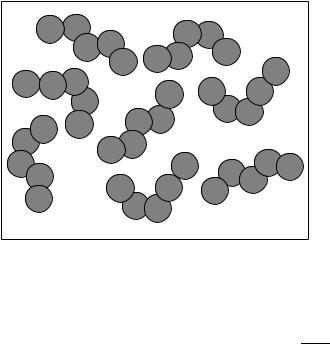
550 |
Frank-Gerrit Klarner¨ and Matthias K. Diedrich |
VW: |
van der Waals volume (cm3 mol 1) |
|
|
|
|
|
|
|
|
|
|
|
|
|
|
|
(intrinsic molar volume of ground and transition structures) |
|
|
|
|
||||||||||
VM: |
molar volume (cm3 mol 1) |
|
|
|
M |
|
|
|
|
|
|
|
|||
|
(empty space included) |
VM D |
|
|
|
|
|
|
|
||||||
|
|
|
|
|
|
|
|
|
|
|
|||||
|
d |
|
|
M |
|
1 |
|
d d0 |
|||||||
V: |
partial molar volume (cm3 mol 1) |
V |
|
lim |
|
|
|
||||||||
D d0 |
c Ð |
d0 |
|||||||||||||
|
|
|
D c!0 |
|
|||||||||||
: |
packing coefficient |
D |
VW |
|
|
|
|
|
|
|
|||||
VM |
|
|
|
|
|
|
|
|
|||||||
M (g mol 1): d (g cm 3): d0 (g cm 3):
c (mol 1):
molar mass of the solute density of the solution density of the pure solvent concentration of the solute
SCHEME 2. Van der Waals volumes, partial molar volumes and packing coefficients
small. If data over a larger pressure range are to be used, nonlinear least-squares fits have to be applied24. Due to the pressure dependence of V6D and V we need to select a pressure to which volumes of activation and reaction refer, so that the values can be compared with one another. The choice has universally been that of zero pressure (p D 0). The values of activation volumes calculated at p D 0 differ only by immeasurably small amounts from those at atmospheric pressure (p ³ 1 bar), so that comparison with the reaction volumes, calculated from the partial molar volumes of the reactants and products determined at atmospheric pressure, is feasible.
Processes accompanied by a decrease in volume, such as C C bond formation, in which the distance between two carbon atoms decreases from the van der Waals distance of ca 3.6 A˚ to the bonding distance of ca 1.5 A,˚ are accelerated by raising the pressure and equilibria are shifted toward the side of products ( V6D < 0, V < 0). The reverse reaction, a homolytic bond cleavage, leads to an increase in volume ( V6D > 0, V > 0). Pressure induces a deceleration of such a process and a shift in equilibrium toward the side of reactants. However, in an ionization, such as an ionic dissociation, the attractive interaction between the ions generated and the solvent molecules leads to a contraction
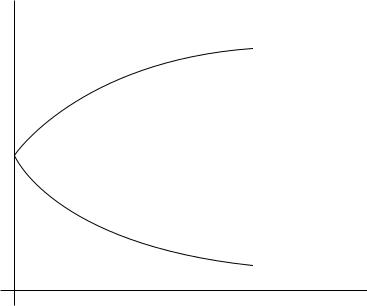
12. The effect of pressure on reactions of dienes and polyenes |
551 |
1n k(p)
∆V≠ < 0
∆V≠ > 0
 p
p
FIGURE 1. Nonlinear slope of the dependence between rate of reaction ln k p and pressure p
of the solvent cage, and hence of the volume, that is generally much stronger than the expansion of volume resulting from the bond dissociation. Thus, the overall dominant effect, called electrostriction, leads to negative volumes of activation and reaction ( VD6 < 0, V < 0). Neutralization of charges releases the molecules of the solvent cage, leading to positive volumes of activation and reaction ( VD6 > 0, V > 0). A similar but less pronounced trend due to the effect of electrostriction is observed for charge concentration and charge dispersal, respectively. An increase in steric crowding in the transition or product states results in a volume contraction ( VD6 < 0, V < 0). Finally, in the case of diffusion control the rate of reaction depends on the viscosity of the medium. As already pointed out, pressure induces an increase in the dynamic viscosity and, hence, a deceleration of diffusion-controlled processes ( V6D > 0).
As noted earlier for the generation and neutralization of charges, the change in the intrinsic volumes of the reacting molecules is responsible for the overall change in molar volumes observed experimentally only to a minor extent. Similar conclusions can be drawn, e.g., for neutral pericyclic rearrangements, from the comparison of the volumes of activation and reaction determined experimentally with the change in the intrinsic volumes
of |
the reacting molecules discussed in Section IV. The intrinsic volume of a ground |
or |
transition structure is defined by the space occupied by the atomic van der Waals |
spheres and can be obtained by numerical integration employing the atomic cartesian coordinates resulting from experimental data, molecular mechanics or quantum mechanical calculations and the van der Waals radii [e.g. RW(C) D 1.80 A,˚ RW(H) D 1.17 A]˚ derived from crystallographic data25. The intrinsic volumes of ground structures can also be calculated from tables of group contributions published by Bondi26. The van der Waals volume VW is the intrinsic volume of a ground or transition structure multiplied by

552 |
Frank-Gerrit Klarner¨ and Matthias K. Diedrich |
Avogadro’s number. The ratio VW/VM is defined as the packing coefficient . The packing coefficients calculated from the VW and VM values of simple hydrocarbons25a are in the range D 0.5 to 0.6. The empty space between the single molecules can be attributed to the so-called void volume and expansion volume required for the thermally induced motions and collisions of the molecules in the liquid state27. The importance of change in the packing coefficient and, hence, in the void and expansion volume for the effect of pressure on a reaction will be discussed in the following sections.
III.CYCLOADDITIONS
A.Intermolecular Diels Alder Reactions
1. Mechanistic aspects
Many Diels Alder [4 C 2] cycloadditions show a powerful pressure-induced acceleration, which is often turned to good synthetic purpose as discussed in Section III.A.2. Table 1 illustrates the effect of pressure on the Diels Alder reaction of isoprene with acrylonitrile as a representative example. This reaction is accelerated by a factor of 1650 by raising the pressure from 1 bar to 10 kbar28.
The activation volumes of many Diels Alder reactions obtained from the pressure dependence of the rate constants are usually highly negative, V6D ³ 25 to50 cm3 mol 1 (Tables 2 and 3); sometimes they are even more negative than the corresponding reaction volumes. For a comparison between volumes of activation and reaction it is necessary to determine both data at the same temperature which is, however, not feasible in most cases. The measurement of pressure dependence of rate constants frequently requires a temperature different from that used for the determination of partial molar volumes of reactants and products (in general, room temperature). Therefore, activation volumes have to be extrapolated to room temperature or the reaction volumes, correspondingly, to the temperature of reaction. The measurement of the temperature dependence of activation volumes requires a large collection of experimental data. To the best of our knowledge only one case, the Diels Alder dimerization of isoprene, has been reported in the literature29. With modern thermostated densimeters it is much easier to determine the temperature dependence of partial molar volumes, and hence of reaction volumes. From these data El’yanov and coworkers30 extrapolated a generally applicable equation (equation 1) to describe the temperature dependence of activation and reaction volumes. The dependence determined for the isoprene dimerization29 is in accord with the El’yanov equation.
V25D6 |
D VTD6 /[1 C 4.43 ð 10 3 K 1 T 25 °C ] |
1 |
In Table 2 Diels Alder reactions are complied showing ratios of activation volume to reaction volume that are smaller than or close to unity ( D VD6 / V 1) and in Table 3 those that are close to or even larger than unity ( 1). Within the scope of transition state theory, the activation volume can be considered to be a measure of the partial molar volume of the transition state [ VD6 D VD6 V (reactants)]. Accordingly, the transition state volumes of these reactions are close to or even smaller than the
TABLE 1. |
Pressure-induced rate acceleration of the Diels |
|
Alder reaction of isoprene with acryloni- |
|||||||
|
||||||||||
trile at 21 °C V6D D 35.4 cm3 mol 1, V D 37.0 cm3 mol 1)28 |
|
|
|
|||||||
p (bar) |
|
1000 |
1500 |
2000 |
3000 |
5000 |
8000 |
10 000 |
||
k p /k (1 |
bar) |
3.4 |
7.0 |
10.5 |
24.4 |
74.4 |
561 |
1650 |
||
|
|
|
|
|
|
|
|
|
|
|
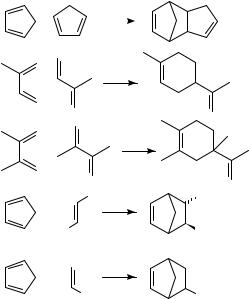
TABLE 2. Volume data of selected Diels |
|
Alder reactions showing ( V6D : V) ratios smaller than unity ( < 1) |
|
|
|
||||||
|
|
|
|
||||||||
|
|
Reaction |
|
Solvent |
T°C |
VT6D a |
V25D6 a |
V25a |
b |
Reference |
|
(1) |
+ |
|
|
|
n-BuCl |
40 |
23.7 |
22.2 |
33.0 |
0.67 |
31 |
|
|
|
|||||||||
(2) |
+ |
|
|
|
|
70 |
42.0 |
35.0 |
47.8 |
0.73 |
32 |
|
|
|
|
|
|
|
|
|
|
|
|
(3) |
+ |
|
|
|
n-BuBr |
70 |
33.0 |
27.5 |
44.9 |
0.61 |
33 |
|
|
|
|
|
|
|
|
|
|
|
|
|
E |
|
E |
|
|
|
|
|
|
||
(4) |
+ |
|
|
|
|
30 |
32.7 |
32 |
36.7 |
0.87 |
31 |
|
E |
|
E |
|
|
|
|
|
|
||
|
E = CO2 CH3 |
|
|
|
|
|
|
|
|
||
(5) |
+ |
|
|
|
n-BuCl |
40 |
30.1 |
28.3 |
33.5 |
0.84 |
31 |
|
E |
|
E |
|
|
|
|
|
|
||
|
|
|
|
|
|
|
|
|
|
(continued overleaf ) |
|
553
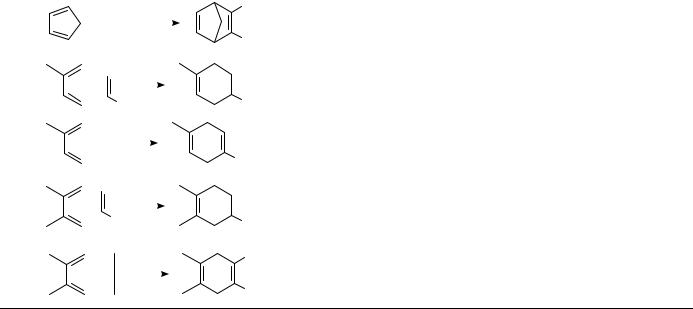
554
TABLE 2. |
(continued) |
|
|
|
|
|
|
|
||||||||||||||||
|
|
|
|
|
|
|
|
|
|
|
|
|
|
|
|
|
|
|
|
|
|
|
|
|
|
|
|
|
|
|
|
|
|
|
|
|
|
Reaction |
Solvent |
T(°C) |
VT6D a |
V25D6 a |
V25a |
b |
Reference |
||||
|
|
|
|
|
|
|
E |
E |
|
|
|
|
|
|
||||||||||
|
|
|
|
|
|
|
|
|
|
|
|
|
|
|
|
|
|
|
30.2 |
32.2 |
36.1 |
|
|
|
(6) |
+ |
|
|
|
|
|
|
|
|
|
|
|
|
|
|
|
|
MeCO2Et |
10 |
0.89 |
34 |
|||
|
|
|
|
|
|
|
|
|
|
|
||||||||||||||
|
|
|
|
|
||||||||||||||||||||
|
|
|
|
|
|
|
|
|
|
|
|
|
|
|
|
|
|
E |
|
|
|
|
|
|
|
|
|
|
|
|
|
E |
|
|
|
|
|
|
|
||||||||||
(7) |
+ |
|
|
|
|
|
|
|
|
|
|
|
|
|
|
|
|
n-BuBr |
25 |
31.5 |
31.5 |
37 |
0.85 |
35 |
|
|
|
|
|
|
|
|
|
|
|
||||||||||||||
|
|
|
|
|
|
|
|
E |
E |
|
|
|
|
|
|
|||||||||
(8) |
+ |
|
|
|
|
|
|
|
|
|
|
|
|
|
|
|
|
CH2Cl2 |
82 |
43 |
34.6 |
39.5 |
0.88 |
36 |
|
|
|
|
|
|
|
|
|
|
|
|
|
|
|
||||||||||
|
|
|
|
|
|
|
|
|
|
|
||||||||||||||
|
|
|
|
|
|
|
|
|
|
|
|
|
|
|
|
|
|
E |
|
|
|
|
|
|
|
|
E |
|
|
|
|
|
|
|
|||||||||||||||
(9) |
+ |
|
|
|
|
|
|
|
|
|
|
|
|
|
|
|
|
n-BuCl |
40 |
30.2 |
28.3 |
34.7 |
0.82 |
31 |
|
|
|
|
E |
||||||||||||||||||||
|
|
|
|
|
|
E |
|
|
|
|
|
|
||||||||||||
|
|
|
|
|
|
|
|
|
|
|
|
|
|
|
|
|
|
|
|
|
|
|
|
|
|
|
|
|
|
|
E |
E |
|
|
|
|
|
|
|||||||||||
|
|
|
|
|
|
|
|
|
|
|
|
|
|
|
|
|
|
|
39.1 |
34.1 |
38.8 |
|
|
|
(10) |
+ |
|
|
|
|
|
|
|
|
|
|
|
|
|
|
|
|
n-BuCl |
58 |
0.88 |
36 |
|||
|
|
|
|
|
|
|
|
|
|
|
|
|
|
|
|
|||||||||
|
|
|
|
|
|
|
|
|
|
|
|
|
|
|
|
|
|
|
|
|
|
|
|
|
E
E
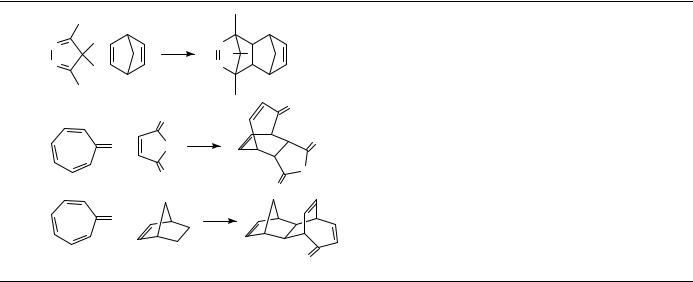
(11) |
N |
+ |
N |
|
MePh |
130 |
41.0 |
28.0c |
28.8c |
0.97 |
37 |
|
N |
N |
|
|
|
|
|
|
|
|
|
|
|
|
|
|
|
|
|
|
|
||
|
|
|
O |
O |
|
|
|
|
|
|
|
|
|
|
|
|
|
|
|
|
|
|
|
(12) |
|
O + |
O |
O |
DMF |
105 |
16.8 |
14.0d |
25.5d |
0.55 |
38 |
|
|
|
O |
O |
|
|
|
|
|
|
|
|
|
|
|
|
|
|
|
|
|
|
|
|
|
|
|
O |
|
|
|
|
|
|
|
|
|
O + |
|
|
|
|
30.0 |
22.5d |
33.5d |
|
|
(13) |
|
|
|
|
i-PrPh |
135 |
0.67 |
38 |
|||
|
|
|
|
O |
DMF |
135 |
27.8 |
20.9d |
32.1d |
0.65 |
|
|
|
|
|
|
|
a In cm3 mol 1; V6DT determined from the pressure dependence of the rate constant at temperature T; V6D25 determined from the temperature dependence of the activation volumes
(entry 2) or generally extrapolated by using equation 1.
b D V6D25 : V25. c At 20 °C.
dAt 60 °C.
555
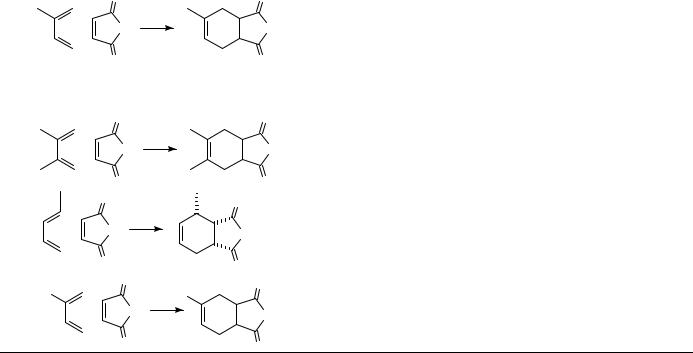
556
TABLE 3. Volume data of selected Diels |
|
Alder reactions showing ( VD6 : V) ratios equal to or larger than unity ( > 1) |
|
|
|
||||||
|
|
|
|
||||||||
|
|
Reaction |
|
|
Solvent |
T°C |
VT6D a |
V25D6 a |
V25a |
b |
Reference |
|
|
O |
|
O |
(i-Pr)2O |
|
38.5 |
36.9 |
38.3 |
0.96 |
|
|
+ |
|
|
|
Me2CO |
|
39.0 |
37.3 |
35.9 |
1.04 |
|
|
O |
|
O |
MeCN |
|
37.5 |
35.9 |
34.5 |
1.04 |
|
|
(1) |
|
|
|
|
n-BuCl |
35 |
38.0 |
36.4 |
36.8 |
|
39 |
|
|
O |
|
O |
AcOEt |
|
37.4 |
35.8 |
0.97 |
|
|
|
|
|
|
|
ClCH2CH2Cl |
|
37.0 |
35.4 |
35.5 |
0.99 |
|
|
|
|
|
|
CH2Cl2 |
|
39.8 |
38.1 |
33.4 |
1.14 |
|
|
|
O |
|
O |
|
|
|
|
|
|
|
(2) |
+ |
O |
|
O |
n-BuCl |
30 |
41.3 |
40.4 |
35.5 |
1.14 |
31 |
|
|
|
|
|
|
|
|
|
|||
|
|
O |
|
O |
|
|
|
|
|
|
|
|
|
O |
|
O |
|
|
|
|
|
|
|
|
|
|
|
|
|
|
|
|
|
|
|
(3) |
+ |
O |
|
O |
n-BuCl |
35 |
44.7 |
42.8 |
31.9 |
1.22 |
31 |
|
|
|
|
|
|
|
|
|
|||
|
|
O |
|
O |
|
|
|
|
|
|
|
|
|
|
|
|
|
|
|
|
|
|
|
|
|
O |
|
O |
|
|
|
|
|
|
|
|
Cl |
Cl |
|
|
|
|
|
|
|
|
|
|
|
O |
|
|
41.6 |
35.3 |
36.9 |
|
|
||
(4) |
+ |
O |
|
MeCN |
65 |
0.96 |
31 |
||||
|
|
|
|
||||||||
O O
